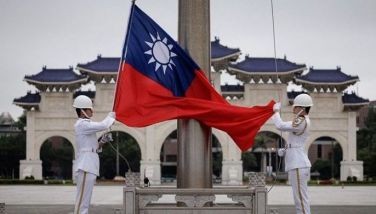Japan sees future business in Fukushima cleanup
TOKYO - There is something surprising in the radioactive wreck that is the Fukushima Dai-ichi nuclear power plant: opportunity. To clean it up, Japan will have to develop technology and expertise that any nation with a nuclear reactor will one day need.
Eyeing dozens of aging reactors at home and hundreds of others worldwide that eventually need to be retired, Japanese industry sees a profitable market for decommissioning expertise.
It may sound surprising, given all the ongoing problems with the coastal Fukushima Dai-ichi plant, including massive leaks of contaminated water and other mishaps that followed its devastation by the March 2011 earthquake and tsunami.
But many experts and industry officials say the experience and technology such as robotics being developed can be used in any decommissioning in the future. That could represent new opportunities for Japan Inc., which has lost some of its global clout to competitors from countries such as South Korea, China and the US
"There is decommissioning business here beyond Fukushima and it's a worldwide business," said Lake Barrett, a former US nuclear regulator who headed the Three Mile Island cleanup. "I think it's an exciting new area," he said. "Japan can be a world leader again."
Japan's government hopes an offshoot will a boom in the country's nuclear technology exports.
Japan on Tuesday marks the third anniversary of the earthquake, tsunami and nuclear disasters known as 3.11 that killed 15,884 people and left 2,636 unaccounted for in vast areas of its northern coast. The country has struggled to rebuild tsunami-hit communities and to clean up radiation from the nuclear crisis, and has earmarked 25 trillion yen ($250 billion) for reconstruction through March 2016. About 50,000 people from Fukushima are still unable to return home due to concerns over radiation.
Despite the Fukushima meltdowns that experts say are far more challenging to deal with than the 1979 Three Mile Island meltdown, Prime Minister Shinzo Abe is eager to sell Japan's nuclear plants and technology overseas. He boasts that Japan can offer the world's highest safety standards that reflect lessons learned from Fukushima.
More than 400 nuclear reactors are already in operation in more than 30 countries, with dozens more under construction. More new reactors are expected, including hundreds planned in China alone by 2050.
Tokyo Electric Power Co., the utility that runs Fukushima Dai-ichi, is setting up a separate company in April to clean up the plant.
Tentatively called the Decommissioning Company, it is overseen by the government's economic ministry and could evolve into a decommissioning organization for other plants at home and abroad. Academics, construction giants, electronics makers and risk management firms are rushing to get on the bus.
Japan also created the government-funded International Research Institute for Nuclear Decommissioning, or IRID, last year. It brings together nuclear plant operators, construction companies and organizations of nuclear experts to promote research and development of nuclear decommissioning technologies, as well as cooperation between international and domestic organizations.
IRID has received 780 proposals for funding from around the world for ideas and technologies related to the treatment and management of contaminated water, as well as 220 others about retrieving the three melted cores.
Japanese companies including Toshiba Corp., Mitsubishi Heavy Industries and Hitachi have been developing robots that can monitor radiation, decontaminate, remove contaminated debris or repair damage, and some of them have been mobilized at the plant.
Standard decommissioning has been largely carried out by human workers. IRID Managing Director Kazuhiro Suzuki said the robotics technologies being developed to probe and remove Fukushima's melted fuel could benefit ordinary decommissioning, not just severely damaged reactors.
"Decommissioning of aging reactors is an imminent task that all nuclear plant operators face," he said.
Use of robotics and other advanced technologies not only helps to reduce worker radiation exposure but also could make a cleanup faster and cheaper, said Barrett, the Three Mile Island expert who now advises TEPCO and IRID.
Experts in Japan are eying a British model, the National Decommissioning Agency, founded in 2005 to be in charge of decommissioning and cleanup of nuclear plants and radioactive waste management.
TEPCO is decommissioning four reactor units crippled by the 2011 earthquake and tsunami, and will later scrap the remaining two that survived. Three suffered meltdowns and one was damaged by hydrogen explosions. The decommissioning of the four would take about 40 years.
The total cleanup cost for the severely damaged Fukushima reactors could be as high as 10 times a standard decommissioning that normally costs about 70 billion yen ($700 million) per reactor, Suzuki said.
Having completed decommissioning of 10 regular reactors and the Three Mile Island cleanup, the US government and nuclear industry see a profitable market too.
In February, representatives of 26 American companies came to Tokyo for presentation and business talks with 50 Japanese companies during a two-day decommissioning and remediation forum, co-sponsored by the governments of Japan and the US
"We can work together and do so much more," said Austin Auger, an executive at CB&I, which worked with Toshiba to assemble one of the earliest treatment units for contaminated water at Fukushima.
- Latest
- Trending






























